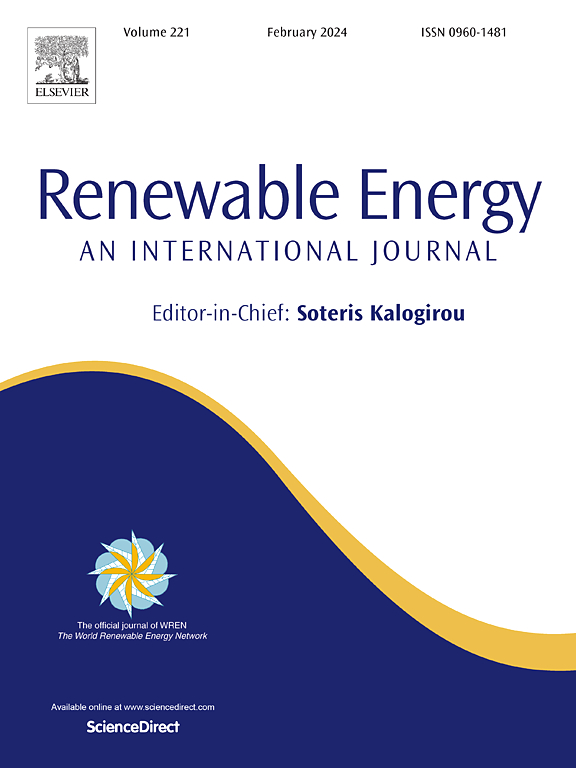Co-Flow injection strategies for hydrogen scramjet engines: A numerical study of H2O, O2, and mixed injections in the cavity region
IF 9.1
1区 工程技术
Q1 ENERGY & FUELS
引用次数: 0
Abstract
The current numerical study investigates the impact of co-flow injection strategies on the performance of a scramjet combustor via computational fluid dynamics analysis. The motivation of this research is to enhance mixing, combustion efficiency, and thermal stress distribution inside the supersonic combustor. A three-dimensional, steady-state, pressure-based solver was employed to simulate the scramjet combustor. Six different cases were developed to assess the effects of co-flow composition, mass flow rate, and injection location on scramjet combustion efficiency. The proposed cases were, conventional scramjet mlocodel (S1), H2O co-flow with mass flow rates of 0.48 kg/s (S2) and 0.96 kg/s (S3), O2 co-flow with mass flow rates of 0.48 kg/s (S4) and 0.96 kg/s (S5), and a mixed O2 and H2O co-flow case with mass flow rates of 0.48 kg/s each (S6). The results show that the introduction of H2O co-flow reduces the temperature at the combustor exit by up to 8 % compared to S1. On the other hand, O2 co-flow enhances combustion efficiency, which results in a temperature decrease of 17.4 % at the same location. The combined O2 and H2O co-flow case achieves a 12.5 % temperature reduction, balancing improved combustion efficiency with effective heat absorption. Co-flow injection also significantly impacts the turbulence intensity, with O2 co-flow producing the strongest effect by reporting up to 236 % increase in the intensity at the injection point. These findings provide design guidelines for advanced scramjet engines and offer a pathway to improve combustion efficiency while managing thermal loads in hypersonic propulsion systems.
氢超燃冲压发动机的共流喷射策略:空腔区H2O、O2和混合喷射的数值研究
通过计算流体动力学分析,研究了共流喷射策略对超燃冲压发动机燃烧室性能的影响。本研究的动机是为了提高超声速燃烧室内的混合、燃烧效率和热应力分布。采用三维稳态压力求解器对超燃冲压发动机燃烧室进行了数值模拟。开发了6种不同工况,以评估共流组成、质量流量和喷射位置对超燃冲压发动机燃烧效率的影响。所提出的工况包括:常规超燃冲压发动机模型(S1)、质量流量分别为0.48 kg/s (S2)和0.96 kg/s (S3)的H2O共流工况、质量流量分别为0.48 kg/s (S4)和0.96 kg/s (S5)的O2共流工况以及质量流量分别为0.48 kg/s的O2和H2O混合共流工况(S6)。结果表明,与S1相比,H2O共流的引入使燃烧室出口温度降低了8%。另一方面,O2共流提高了燃烧效率,在相同的位置温度降低了17.4%。结合O2和H2O共流的情况下实现了12.5%的温度降低,平衡提高燃烧效率和有效的吸热。共流喷射对湍流强度也有显著影响,其中O2共流产生的影响最大,在喷射点的湍流强度增加了236%。这些发现为先进的超燃冲压发动机提供了设计指导,并为在控制高超声速推进系统热负荷的同时提高燃烧效率提供了途径。
本文章由计算机程序翻译,如有差异,请以英文原文为准。
求助全文
约1分钟内获得全文
求助全文
来源期刊

Renewable Energy
工程技术-能源与燃料
CiteScore
18.40
自引率
9.20%
发文量
1955
审稿时长
6.6 months
期刊介绍:
Renewable Energy journal is dedicated to advancing knowledge and disseminating insights on various topics and technologies within renewable energy systems and components. Our mission is to support researchers, engineers, economists, manufacturers, NGOs, associations, and societies in staying updated on new developments in their respective fields and applying alternative energy solutions to current practices.
As an international, multidisciplinary journal in renewable energy engineering and research, we strive to be a premier peer-reviewed platform and a trusted source of original research and reviews in the field of renewable energy. Join us in our endeavor to drive innovation and progress in sustainable energy solutions.
 求助内容:
求助内容: 应助结果提醒方式:
应助结果提醒方式:


